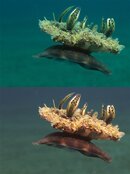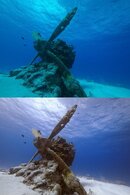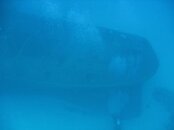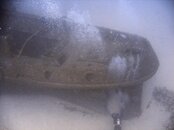Photoshop is a pixel editor for creating fantasies or compositing photos - Nice for HDR and studio stuff; not so much for underwater stills. It'll do what you need eventually though much harder than it should be...
OK, so you don't have an idea what Photoshop is and does... well, that's OK, as long as you are happy.
Photoshop is the top of the bill photo editor. It can do lots more than the very limited image correction facilities image 'management' systems like Lightroom offer... people who use both will notice some resemblances between the two because they are using the same base, but PS is the 'bid daddy' of all image editing. The standard RGB color mode Photoshop is working in does not have a 'temperature control' (I think that is what you refer to as being a 'white balance' tool), but if you want it per-se, you could use Photoshops Camera Raw plugin to get one. Or you could make a little round-trip to Lab color space, that works similar.
A problem with any 'global'correction method in RGB color space (channel blending, curves adjustment etc.) is that when you alter RGB values to change a color, you inherently alter the lightness of pixels. That is why corrected uw pictures are very prone to artefacting and colorisation, especially in the dark parts of the image. In the examples mentioned in the thread, you can always notice red contamination of the shades, even though the picture isn't that dark. And it's logical that happens, because you add 'red' light to the WHOLE of the picture, not just to the parts that need it.
There are 2 methods that don't suffer (as much) from this effect. One is by making use of the Lab colorspace, but for using it you have to have an understanding of how that space works. That's asking for too much for most PS-users.
The other one is a method in RGB space, which makes a luminosity map of the image that is colored in, and overlayed onto the original. That map makes sure that light patches in the picture get their share of red light. Let me describe it briefly:
1. open the bluecast image
2. copy it twice (ctrl-J)
3. fill the middle layer with 50% gray (shift-backspace) or (Edit -> Fill)
4. set the blending mode of the top layer to 'Luminosity' mode by selecting that in the upper left dropdown box in the layers pallette. The image will turn into a grayscale representation.
5. press ctrl-E to merge the top layer with the gray layer.
6. add an empty layer to the top of the stack
7. fill this top layer with bright red
8. set the top layers blending mode to 'Multiply' blend mode (thus coloring the luminosity map red)
9. press ctrl-E to merge the red layer with the L-map
10. set the resulting correction layer to 'Screen' Blend mode, to counter the blue cast of the image.
That should give you a decent starting point for further corrections. You can alter the transparency of that layer a bit, or you can clip a Hue/adjustment layer to it to colorize it to another shade of red/orange to counter the specific bluecast better...
some examples. The first two are using this RGB correction method, the one with the wreck has such a massive hue to it the only way I could make something out of it was using a Lab method...












